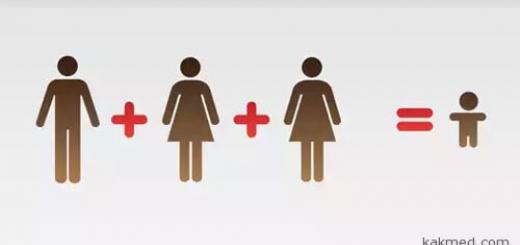Waste-fired boilers is a collective non-formalized term that combines boilers, furnaces and boiler units - heat recovery units of different design, thermal power, efficiency, purpose and popularity, which provide the incineration of waste of various origins using the heat obtained during combustion instead of expensive and environmentally unsafe burial in special polygons. The most commonly used waste boilers in the developed world include:
- waste incineration boilers, furnaces and boilers on the waste of industrial enterprises and boilers / furnaces / boilers on human waste - as a rule, municipal solid waste;
- stoves and boilers for waste from the woodworking industry - wood-burning boilers, boilers for wood chips and pellets (specially compressed granules of pre-shredded waste from woodworking enterprises);
- boilers on waste products of the oil refining industry (boilers and air heaters on waste oils - motor, industrial, turbine, hydraulic, transmission) and oils of animal / vegetable origin.
The main characteristics of any boiler on waste include:
- efficiency, which ranges from 30-40% for waste incineration boilers to 80-90% for pellet boilers (condensing type) and mining boilers;
- specific cost of obtaining 1 kW/kJ/kcal of heat by burning a unit volume/mass of waste;
Important: The specific cost of obtaining 1 kW / kJ / kcal of heat is determined not only by the calorific value of the waste and the efficiency of the waste boiler, but also by:
the cost of additional energy used for waste incineration - fuel (gas, fuel oil, waste) used in the ignition and stabilization burners of waste incineration boilers, electricity from compressors / fans that supply primary and secondary air to the combustion chamber, electricity from chamber pushers and electric motors for rotating hearths of waste incinerators boilers, electric power of screw mechanisms for loading and cleaning grates of pellet boilers, electric power and fuel of systems for multi-stage cleaning of exhaust gases of waste incineration boilers, etc.;
the cost of delivery and preparation for waste incineration;
the cost of cleaning the combustion chamber and smoke channels, as well as the cost of measures for the disposal of slag formed after combustion;
the initial cost of the waste-fired boiler, the amount and frequency of depreciation charges;
the cost of automation and / or the work of maintenance personnel, etc., etc.
the cost of a furnace/boiler unit/boiler on waste and related equipment/structures/devices/measures that provide a full cycle of waste incineration with slag disposal and purification of burnt gases from impurities to MPC established by international and/or current national legislation.
Waste incineration boilers.

Waste incineration boilers, less often waste-fired boilers in Russia are used in waste incineration plants, sometimes in large centralized boiler houses. Typical waste incineration boilers are chamber type, usually with pushers that provide feeding / mixing of waste and cleaning the grate from slag, or are made like rotary hearth furnaces. For ignition and stabilization of combustion in waste boilers, gas-oil, oil-fired or waste oil burners are used, more complete combustion is ensured by forced air supply to the combustion chamber (from the loading window, from the hearth and sides), as well as temperature zoning (in rotary kilns / waste boilers) with the provision in the zones of a temperature not lower than 1200 degrees Celsius for the afterburning of soot with benz (a) pyrene and dioxins absorbed in it and a temperature of 1500-1600 degrees Celsius, at which the maximum possible complete decomposition / oxidation of dioxins, furans and carcinogenic substances.
As a rule, after the waste furnace/boiler, reactors/scrubbers are integrated into the process chain for cleaning exhaust gases from solid inclusions, organic and inorganic acids, nitrogen dioxide, sulfur compounds, as well as electric filters for the final purification of burnt gases from fine particles of slag and fine ash. inclusions.

The norms formalized back in the USSR determine the possibility of locating waste incineration boilers on waste no closer than 300 m from residential buildings, and furnaces / boilers / boilers on waste must be equipped with an effective system for cleaning burnt gases to the established MPC for NH3, HF, HCl, NOx, SO2, CO2, CO, dioxins and furans, soot, etc.
The main problems of waste incineration boilers in Russia:
the calorific value of Russian municipal solid waste is 900-1300 kcal / kg, while waste in the EU countries, the USA, Canada due to the higher content of packaging combustible materials and the lower content of food waste (no more than 15-20% compared to 35-40 % in Russia) have a calorific value of 2200-2600 kcal/kg. The low calorific value of Russian waste determines the low temperature level in the combustion chamber (at the level of 800-1000 degrees), incomplete combustion of waste, a large amount of slag (30-40% of the volume / mass of the load) and high toxicity of exhaust gases, which necessitates the use of whole complexes for post-treatment of gases before their release into the atmosphere and disposal of slags at specially designated landfills for these purposes;
the absence in Russia of preliminary sorting of waste according to the places of their collection, as is practiced in the EU, the USA and other countries, makes it practically impossible to determine the approximate composition of waste, its calorific value, correction of the combustion process, as well as the presence of ferrous and non-ferrous metals in slags, which it is advisable to separate from the slag before its disposal;
Waste-fired incinerators are large-scale units that are expensive in terms of initial investment and operating costs, and their installation in enterprises, waste incinerators or boiler houses requires a large number of permits from the relevant authorities;

Woodworking industry waste boilers are currently recognized by the EU as promising heat generators, oriented to use both in local heating systems and boiler heating networks ( thermal power modern boilers for waste from the woodworking industry varies from 2-3 kW to 200 kW or more). If we abstract from typical solid fuel boilers, inefficient, with manual loading of fuel and cleaning of the combustion chamber, while sold by a number of manufacturers on the market thermal equipment Russia, it should be recognized that over the past 2-3 decades, boilers using waste from the woodworking industry (wood, wood chips, pellets) have passed the next stage of evolution and today are characterized by comfort in operation and efficiency in burning wood waste.

Rice. Typical solid fuel boilers.
Waste boilers from manufacturers in Germany, Finland, Sweden have an efficiency of 80 to 96% (in condensing boilers), are equipped with systems for automatic fuel loading, combustion chamber cleaning, control and management of the combustion process and removal of burnt gases (see videos below) .

Video of the operation of an automated wood-burning boiler Buderus AG, part of the Bosch Thermotechnik division production and commercial groups Bosch Group .
Your browser does not support our video player.
Video of the operation of the automated pellet boiler Buderus AG.
The main difficulties in arranging heating with wood / pellet boilers in Russia:
calorific value of coniferous firewood 7.5 - 8 MJ / kg, pellet - 6 MJ / kg, waste oils - 34 - 35 MJ / l, diesel fuel - 33.5 - 34 MJ / l, i.e. to obtain one power of thermal energy it is necessary to burn 1 liter of mining / diesel fuel, 5.5 kg of pellets or 5 kg of softwood or hardwood firewood. At the cost of a kilogram of firewood / pellets from 6 rubles, the cost of a liter of mining is 6.5 rubles. and a liter of diesel fuel 29 rubles. in the Moscow region, with equal boiler efficiency, this will determine the cost of 1 kWh of energy 3.07 - 3.03 Rub. / kWh for diesel fuel boilers, 0.68 - 0.66 Rub. / kWh for mining boilers, 2.85 - 2.68 Rub. / kWh for wood-fired boilers and 3.39 - 4.05 RUB / kWh for pellet boilers;
the calorific value of wood waste strongly depends on the moisture content of the fuel being burned, and therefore it is necessary to equip a special dry room for storing a reserve stock of firewood / pellets, preferably with control and correction of relative humidity, and the room should be located in close proximity to the boiler room and have a significant volume, sufficient to ensure the uninterrupted operation of the boiler on waste during the period of operation;
the cost of automated waste-fired boilers - wood and pellets, and even more so efficient condensing type is very high, and the failure-free operation of automation is determined both by the quality of the manufactured components and mechanism, and by the quality of the supplied electricity;
Typically for Russia, an increase in the number of pellet producers has practically no effect on their consumer value, which has been steadily increasing over the past five years.
Waste oil boilers.
Waste oil boilers are still considered to be one of the most economical heat generators in terms of initial investment and operating costs, and even in Russia the cost of waste oil recovery remains relatively stable, which is due to significant costs for the disposal of waste oil from supplier enterprises and low demand compared to the current supply on the market. The main advantages of air heaters and mining boilers include:
- high calorific value of mining, comparable to the calorific value of diesel fuel;
- ease of automation, control and management of boiler equipment and the heating system as a whole, including remotely via the Internet, cellular networks 4G, 3G, EDGE from a PC, Netbook, AppleMacBook, Notebook, smartphone, communicator, iPad, iPhone and iPodTouch (see. );
- relatively low cost of modern mining boilers and low operating costs for fuel, maintenance and depreciation of equipment;
- the availability of mining on the fuel market at the current moment and in the future, taking into account the fact that the annual accumulation of used oils in Moscow alone is more than 250 thousand weight tons and this value is constantly increasing.
BiComs Holding is the official distributor of the leading American manufacturer of waste oil heating equipment EconoHeat - OMNI USA, an authorized dealer of EnergyLogic (USA) and offers its compatriots - legal entities and individuals efficient and economical air heaters and exhaust boilers. BiComs Holding specialists will help you choose an air heater or a boiler to develop the required power, if necessary, design an efficient heating system, provide full information and advisory assistance during installation and operation, perform warranty and post-warranty (under the contract) maintenance of boiler equipment.
Modern trends require maximum efficiency from industrial wood processing enterprises in any process, but the issue is especially acute with waste processing. Firms that do not have time to adapt to a new format of work risk being left out of the market.
A powerful impetus to the industry was given boiler plants implemented as part of the import substitution program, and having affordable price unlike imported counterparts.
Benefits of recycling wood waste
Waste woodworking (sawdust, lumpy waste slats, wood chips, slabs and wood dust) - in the end, taking into account deep processing, 60-70% of the volume of input raw materials. Therefore, the disposal of by-products of production is so in demand today.
Most industries get out of this situation the old-fashioned way, burning waste in stratified combustion boilers or in "potbelly stoves". In both cases, the process is accompanied by a large amount of soot, soot and other environmentally harmful combustion products.
Others "litter" their production and nearby territories, creating a danger to the environment, forests and people living nearby, including due to the fact that recyclable materials can ignite spontaneously due to exothermic reactions occurring in their depths.
The situation is even worse with furniture production, where by-products from the processing of chipboard, MDF and fiberboard must be disposed of in special ovens or "burials", as they contain toxic phenols and formaldehydes.
Ideal for burning industrial enterprises the boiler water heating plant of the gas-generating type "Gefest" is suitable.
Features of recycling processes
The process of environmentally friendly waste incineration in boilers includes:
- complete decomposition of phenolic gases harmful to the atmosphere into carbon and hydrogen (flue gases) due to high temperature (>1200 degrees);
- minimum amount of waste in the form of ash.
At the same time, waste and sawdust from sawmills, woodworking, carpentry and furniture production. This is especially true for the furniture industry.
Principle of operation
Operation of the boiler plant wood waste based on the principle of gas generation. Gasification takes place in a special unit (gas generator) - thermal decomposition of wood into flue gas and hydrogen.
This method of utilization has the following advantages over layered combustion of fuel in conventional boilers:
- high efficiency of boiler plants (up to 90%);
- almost complete smokeless combustion of bulk fuel (ash content does not exceed 1 - 2%);
- the possibility of recycling any by-products of woodworking production, including chipboard, chipboard, MDF;
- installation of spark extinguishing and flue gas cleaning systems is not required;
- ease of control - automatic mode of metered fuel supply;
- durability - the life of the boiler without repair is up to 15 years;
- automatic humidification of dry bulk fuel (relative humidity 35-55%) prevents heating of the gas generator lining, significantly increasing its service life without repair;
- high maintainability of the gas generator;
- the design of the water boiler eliminates the formation of scale inside the heat exchanger pipes, and also allows the use of equipment for water heating and heating;
- characteristics of emissions into the atmosphere during combustion do not exceed the maximum permissible concentrations (MAC).
Advantages of KAMI
The environmental friendliness of the equipment is confirmed by a certificate based on laboratory tests. The data of the analysis obtained indicate that gas-generating boiler plants can be used even in cities, when burning chipboard, chipboard, MDF waste.
KAMI is the exclusive supplier of boiler equipment. On our site you can choose, compare specifications and buy the installation at competitive prices. Before ordering, consult with the company manager - he will help you fill out a request and help with delivery in Moscow and any region of Russia, as well as advise on all types of machines that are in the company's nomenclature, including drying chambers and other types of industrial equipment.
It is very important for owners of private houses to have stable independent heating, the main indicators of which will be: safety, reliability, convenience and reasonable cost.
The best choice would be to install a boiler for a long-burning house. One of the most accessible and diverse types of fuel is solid fuel.
To automatic solid fuel boilers of long burning can be attributed units on wood waste. They can be used as the main or only source of heat in the heating and hot water supply (DHW) system.
The use of such boilers can be domestic and industrial.
The principle of operation of boilers on wood waste
A bunker is installed next to the boiler, into which wood materials are loaded. Fuel from the bunker is fed into the boiler by means of an automatic conveyor. The unit burns fuel, and the released heat is transferred to the coolant using a heat exchanger.
The principle of operation of a long-burning boiler is the layered combustion of fuel, and the combustion zone moves from top to bottom.Types of wood waste incineration:
- Direct combustion is the combustion of fuel directly on the grate. Accompanied by high combustion temperature. It is used in low power boilers (up to 20 kW) for fuel with high humidity.
- Combustion in a fluidized (circulating) bed is provided by supplying a strong jet of air from the bottom up, as a result of which the efficiency of fuel combustion is increased and the amount of harmful emissions is reduced.
- Gasification (burning of gases) is the process of release of volatile substances from solid fuel under the influence of high temperatures and their subsequent combustion.
Read about the use of electric boilers in.
You can read about universal burners for liquid fuels here -
Also learn about the principle of operation, brands and main characteristics.
The design of long-burning wood-fired boilers
The unit includes in its design:
- Fuel bunker.
- Fuel conveyor.
- Firebox.
- Burner.
- Heat exchanger.
- flue.
- Ash collection.
- Fans and smoke exhausters.

Types of heat exchangers for solid fuel boilers
Heat exchangers are of two types:
- Cast iron heat exchanger has a service life of up to 40 years. It has a large wall thickness, which complicates its heating, but after complete heating, the metal retains heat for a long time. The main requirement for the operation of a cast-iron heat exchanger is compliance with the temperature regime. Do not add cold water to a hot heat exchanger.
- The steel heat exchanger is not so picky about temperature distortions, but is more susceptible to corrosion, so the service life is significantly reduced - up to 20 years.
Gas boilers for sawdust and wood chips
The main difference between gas generating boilers is the type of fuel combustion. For combustion, a firebox is used, divided into 2 chambers.
In one of them, sawdust or wood chips are thermally treated, as a result of which combustible pyrolysis gas is released, which is burned in another chamber.
Construction of a gas generating boiler
The main design difference is the presence of two chambers in the furnace. An electric heater is installed in the fuel thermal treatment chamber (combustion chamber). It is needed for the initial heating of the air in the furnace after the first load.
The presence of electric heaters makes it possible to automate the process of ignition of the boiler. The second part of the furnace is called the gas afterburner.
Unit functionality
Boilers are divided into two types: single-circuit and double-circuit.
- A single-circuit boiler provides heating of the coolant for the heating system.
- A double-circuit boiler simultaneously heats the coolant for the heating system and water for the DHW system.
Read about the automatic control of the power of the burner of heating boilers.
Information about the automatic safety of the gas burner can be found at the link -
Advantages of solid fuel boilers for long burning
Units on wood waste (sawdust) are in high demand in those areas where there are difficulties with the supply of gas or electricity. Their main advantages:
- Possibility of burning fuel with high humidity (up to 90%).
- Automatic fuel supply.
- The amount of harmful emissions is kept to a minimum.
- Boiler automation.
- Possibility of work on one loading of the bunker.
Disadvantages of sawdust boilers:
- If a large piece of wood is caught in the sawdust, the screw conveyor will jam.
- In smoldering type boilers, there is no possibility of additional loading of the fuel hopper during operation.
- The increased moisture content of the fuel affects its calorific value, which reduces the efficiency of the unit.
Brands of automatic solid fuel long-burning boilers

| Model | AGGU-60 | AGGU-120 | AGGU-250 | AGGU-600 |
| Rated thermal power, kW | 60 | 120 | 250 | 600 |
| Heat carrier temperature, С° | up to 95° | up to 95° | up to 95° | up to 95° |
| Heated area (height 3.5 m) | 400 m² | 800 m² | 1700 m² | 7000 m² |
| Drying chamber volume | up to 15 m³ | up to 30 m³ | up to 60 m³ | up to 150 m³ |
| Consumed amount of fuel: | ||||
| – bulk volume of sawdust (chips), m³/day | 2.5÷3.0 | 5.0÷6.0 | 10.0÷12.0 | 25 |
| – volume of lumpy waste, m³/day | 1.75÷0.95 | 1.5÷1.9 | 3.0÷38 | 7 |
| Power consumption, kW | 0,55 | 0,75 | 1,1 | 2,5 |
| Hopper volume, m³ | 0,6 | 1,5 | 1,5 | 1,5 |
| Dimensions of the room for EC, m | 4.0×5.0×2.5 | 4.5×5.5×2.5 | 4.5×6.0×3.0 | 5.5×7.0×3.0 |
| Weight, kg | 1300 | 1950 | 3000 | 6000 |
Waste-fired industrial boilers:
| Brand/parameters | KVm-0.2 | KVm-0.3 | KVm-0.4 | KVm-0.6 | KVm-0.8 | KVm-1.16 | KVm-1.5 | KVm-2.0 | KVm-2.5 |
| Length, mm | 2300 | 2600 | 2600 | 2850 | 3400 | 3400 | 3500 | 3500 | 4700 |
| Width, mm | 1450 | 1450 | 1650 | 1900 | 1900 | 1900 | 1900 | 2150 | 2150 |
| Height, mm | 2650 | 2800 | 2800 | 2800 | 2800 | 3000 | 3550 | 3550 | 3650 |
| Heat output, MW | 0,2 | 0,3 | 0,4 | 0,6 | 0,8 | 1,16 | 1,5 | 2,0 | 2,5 |
| Weight, t | 3,8 | 4,2 | 4,5 | 5,2 | 6,0 | 6,6 | 7,4 | 9,0 | 10,5 |
| Fuel consumption, kg/hour | 107 | 161 | 214 | 322 | 429 | 623 | 806 | 1075 | 1344 |
| Efficiency, % | At least 84 | ||||||||
| Air supply | Forced blow | ||||||||
Types of fuel for waste boilers
The following types of fuel are suitable for boilers:
- Sawdust - characterized by high humidity, but affordable price.
- Pallets are compressed waste from the woodworking industry. Differ good performance and are efficient at burning, but more expensive than sawdust and firewood.
- Wood chips are logging waste.
- Grain waste has a high calorie content.
- Other biofuels: straw, sunflower husks and others.
Automatic fuel supply
The fuel supply system operates in automatic mode and consists of two elements: a fuel hopper and a conveyor.

The intensity of the fuel supply is regulated by the automatic system depending on the set temperature.
A modern long-burning solid fuel boiler has a reliable automation and protection system that will ensure heating of the coolant without unnecessary worries. This fuel has a more affordable price than analogues, therefore it is in demand.
The development of special boilers, where wood waste (for example, wood chips) is used as a fuel, was provoked by the need to transport them to a landfill. Such processes make wood processing significantly more expensive. The way out of the situation was the burning of wood debris and the use of the released thermal energy for various purposes.
To date, boilers for burning wood waste are most often used in the field of:
- Housing heating. Usually this is the boiler itself. For the conditions of private housing, this is quite enough.
- Industry. Here, on the basis of the boiler, a special powerful cell is assembled, equipped with additional devices (electronic control, ash catcher, augers for feeding waste into the furnace, smoke exhausters).

According to the principle of burning wood, boilers for wood waste and wood chips differ in:
- Fixed grates. Divided into 2 sections. In the straight part of it, the fuel is burned, and in the inclined part it is dried. The most common method.
- Mechanical grids. It provides for a complex controlled system of alternating fixed and movable grates (less often chain). Allows the use of lumpy fuel with a high percentage of moisture, drying it and sorting it into fractions in the process of supplying to the furnace.
- Fluidized bed. Chopped wood is fed onto an inert layer (sand) blown with air. The gradual removal of sand by the air stream makes it necessary to constantly add it.
- Flare combustion. The system requires grinding wood to small fractions (chips, sawdust). The type of furnace is vortex.

Consider the differences and the principle of heating:
- Air heating
The air intake system is located directly next to the firebox, working on the principle of a convector. The main source of heating is the heat released during the combustion of wood. These models require manual loading of raw materials and their low moisture content (maximum 20%). Suitable for irregular heating, where heat transfer begins within a couple of minutes after the ignition of the fuel.
Hot air boilers are often used in drying chambers, including for drying wood at timber processing enterprises and sawmills, where wood waste is always in excess.

There are 2 types of cameras used here. In one, the combustion of wood occurs, and in the other, pyrolysis afterburning of heated gases. This significantly increases efficiency, which allows the boiler not only to act as a heater, but also to additionally heat water (located in a special boiler). A chimney system with a large number of elbows also increases heat dissipation.

Fuel can be supplied not only manually, but also automatically (continuously). In this case, the arrangement of an additional bunker for wood waste is required. Also, such systems require additional equipment of the boiler with grate blowing (especially if there are several grates). If the boiler has an auto-ignition system based on a plasma arc, then special sensors are required to monitor whether a fire has occurred. If there is no flame and heating, then they give a signal to re-arc. Wood waste boilers equipped with electronic automation panels, sensors and continuous fuel supply require additional power from electrical network(consumption up to 300 W per hour). Allow to work with more crude fuel with humidity up to 40%.
Manufacturers and prices

Most imported boilers from companies such as Hargassner, Viessmann, Heiztechnik have a rather high price. This is due to the use of a large number of electronics and complex firebox systems. The quality is certainly on top, but whether it is worth paying extra for additional features depends on whether you need them.
With the growth of gas and electricity tariffs, there is a need to use cheaper types of fuel. These include peat, wood waste, agricultural waste. Many enterprises are created on sites with no communication of thermal networks. There is a problem with the heat necessary for the normal operation of the enterprise. This is solved by building an autonomous boiler house. Waste-fired boilers have been created to generate heat.
Waste boilers solve two important problems. Firstly, they help to get rid of unnecessary waste from woodworking enterprises, straw, oilcake. Secondly, they help to solve the problem with heat for the needs of the enterprise, domestic needs.
Wood waste boiler
Solid fuel boilers are divided into two groups. The first group - boilers that use wood, sawdust, wood chips, firewood up to 1.5 m long, lumpy waste as fuel. The second group - boilers with pyrolysis combustion of wood, the package includes a vortex gas generator. The combustion of wood gas is used, excluding the formation of soot. The wood waste boiler allows you to adjust the power in the range of 30-100%, while the efficiency remains high. Water acts as a heat carrier, the package includes a fuel storage tank - a bunker, which helps to ensure round-the-clock uninterrupted operation. Fuel loading is needed once a day. The woodworking waste boiler creates the possibility of transferring thermal energy over long distances, to be used for drying in drying chambers. The pyrolysis system allows the use of wood with a moisture content of not more than 20%. The woodworking waste boiler provides for mechanical fuel supply, which guarantees stable combustion of the furnace, and allows you to adjust the heat output. The wood waste boiler maintains the set outlet water temperature. The operation of the boiler is controlled by automation. Modifications of these boilers can be represented by models KVSM-OD and KV-VA.
Wood waste boiler
The waste boiler is completely safe to operate, the kit includes a protection system that meets the regulatory requirements for fire and technical safety; represents a practically ready-to-use design. The waste boiler solves the problem with fuel in an original way, using different kinds woodworking and sawmill waste. They are characterized by reliability, simplicity and ease of maintenance.











